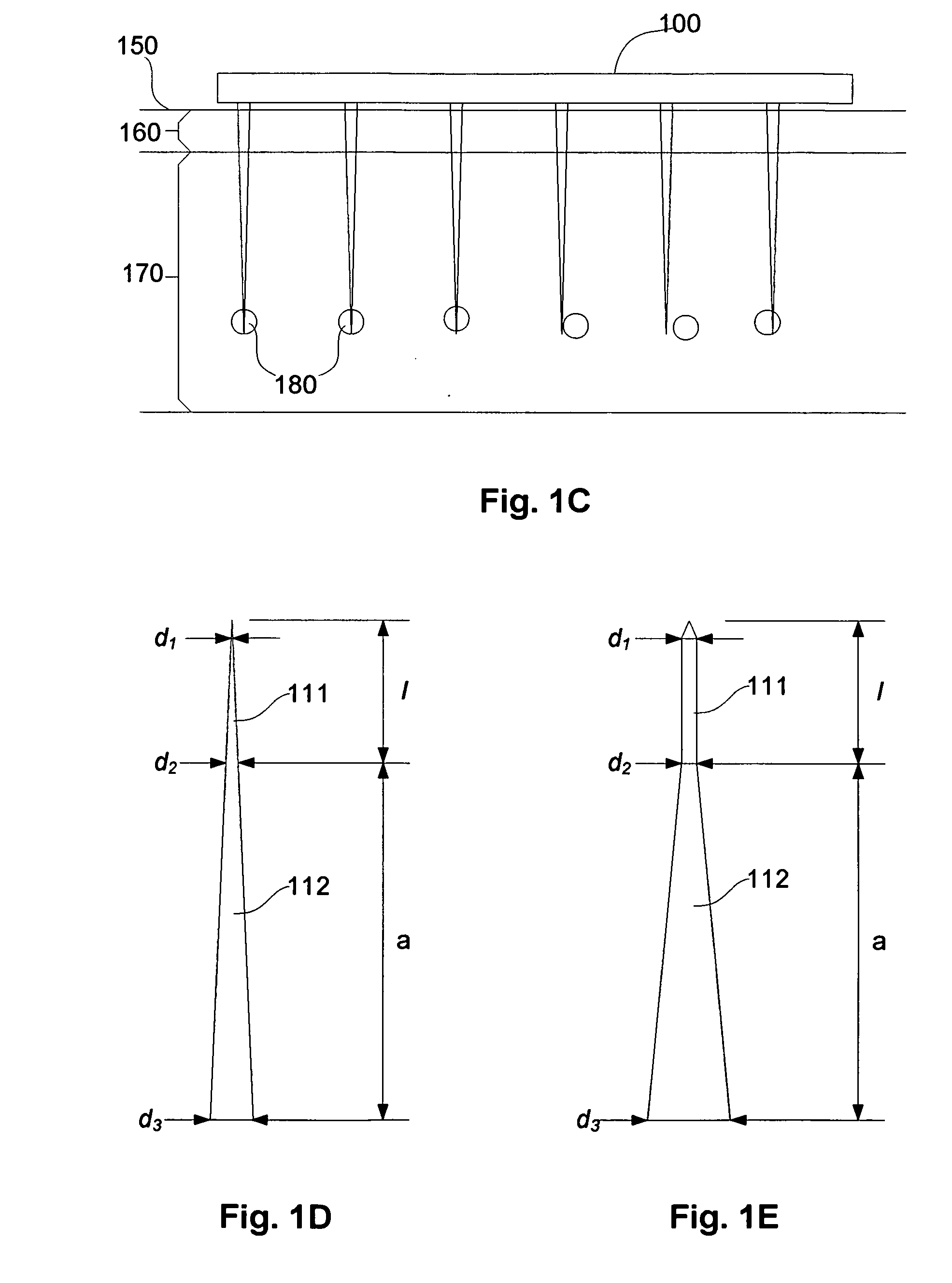Delivery device
a delivery device and delivery technology, applied in the field of delivery devices, can solve the problems of inability of needles and syringes to target key cells in the outer skin layer, serious limitation of many existing and emerging strategies for prevention, treatment and monitoring a range, and many of these approaches remain untested for complex entities such as vaccines and immunotherapies
- Summary
- Abstract
- Description
- Claims
- Application Information
AI Technical Summary
Problems solved by technology
Method used
Image
Examples
specific examples
[0282]A number of specific examples will now be described.
Transfection Probability
[0283]In this example, which focuses on the transfection of Langerhans cells, a number of additional practical considerations may also be taken into account.
[0284]In particular, if the model of a point targeting section with no radius is used, this predicts an idealised projection spacing S=6.5 μm, as used in the example of FIG. 8. In this case, the LC diameter is ˜10 μm, so that to satisfy the requirements set out above, namely that S≦dc, so S≧10 μm.
[0285]Also, for structural reasons, the diameter of the base of the projections d3 is likely to be above 6.5 μm, and a “clearance” will be needed between each projection, so for practical reasons, the minimum projection spacing (S) is at least 10 μm.
[0286]FIG. 8 shows an example of the Transfection Probability vs Needle Spacing, for targeting of Langerhans cells with a spacing of 32 μm. The S≧dc criterion and practical considerations of minimum size of the...
PUM
 Login to View More
Login to View More Abstract
Description
Claims
Application Information
 Login to View More
Login to View More - R&D
- Intellectual Property
- Life Sciences
- Materials
- Tech Scout
- Unparalleled Data Quality
- Higher Quality Content
- 60% Fewer Hallucinations
Browse by: Latest US Patents, China's latest patents, Technical Efficacy Thesaurus, Application Domain, Technology Topic, Popular Technical Reports.
© 2025 PatSnap. All rights reserved.Legal|Privacy policy|Modern Slavery Act Transparency Statement|Sitemap|About US| Contact US: help@patsnap.com



